Over the past weekend, a select group of Houghton business students put their financial skills to the test and learned what it means to apply faith to the world of finance.
On Nov. 3, three students—Yonatan Fessehaye ’17, Tyler Stetson ’20, and Jonathan Niles ’17—travelled to Temple University in Philadelphia to participate in the University Trading Challenge. The challenge, open to graduates and undergraduate students, realistically mimics the world of capital markets and help participants hone their trading, portfolio construction, and risk management skills. Established in 2010, it also aims to “foster innovation and creative thinking for students looking at careers in the financial markets.” Students participate in an investment banking presentation, trading competitions focused on current events and foreign exchange markets, and a portfolio management challenge.
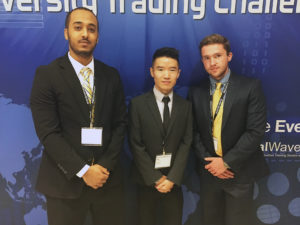 “It’s a good experience for students interested in finance because it’s a high-pressure situation and is very competitive,” said Stetson, who won the individual portfolio management competition and hopes to apply his studies in mathematics in the investment management or investment banking fields. “It was especially intense and humbling for us because we were the only undergrads there.”
“It’s a good experience for students interested in finance because it’s a high-pressure situation and is very competitive,” said Stetson, who won the individual portfolio management competition and hopes to apply his studies in mathematics in the investment management or investment banking fields. “It was especially intense and humbling for us because we were the only undergrads there.”
On Nov. 5, Karl Sisson, Houghton’s Vice President for Advancement and External Relations, accompanied a larger group of students to New York City to participate in the 2017 Collegiate Faith & Finance Day, which was hosted by Archegos Capital Management, an international investment firm, and The Grace & Mercy Foundation, a grant-making charitable organization.
The highly selective event invited only students from four schools—Houghton, Columbia University, The King’s College of NYC, and the University of Pennsylvania—and included a variety of panels and presentations related to the topic of Christians in finance.
Participants immersed themselves in the action of the trading floor at Morgan Stanley and Nomura Security. In the afternoon, they visited the offices of Archegos Capital Management and The Grace & Mercy Foundation to enjoy industry presentations on diverse topics as mentorship, human capital, and Christian vocation. “They are a bright light in the midst of a lot of darkness,” Sisson said of the event’s sponsors.
To Wall Street . Bill Hwong and Andy Mills, the CEO and Executive Chairman of Archegos and two of the event’s main speakers, have spoken at Houghton chapel services in the past. Hwong also serves on the Fuller Theological Seminary board alongside President Shirley Mullen.
“Our students were fantastic,” Sisson said. “They represented Houghton exceptionally well in a setting we are not normally accustomed to.” Sumi Kim, president of the Grace & Mercy Foundation, echoed Sisson’s praise, commenting that her organization was “very impressed with the high level of engagement, energy and dialogue of the Houghton students!”
In the future, Houghton hopes to continue collaborating with the Grace & Mercy Foundation on outreach and service. “They see us as a partner school,” Sisson said. “They like what they see from Houghton students, and they are really intrigued by what we’ve done with refugees in Buffalo and Utica.”

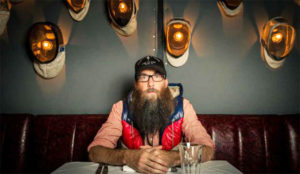 As a part of the David Crowder Band, Crowder earned a reputation for his fresh musicality, elaborate instrumentation, and sometimes contemplative, sometimes cheeky lyrics. His newest offering, according to a review in CCM Magazine, “features every flavor ever served up by David Crowder at one point or another and then some, a delicious array of musical styles brought together to his inimitable gift for melody. Only Crowder could get away with such a set list.”
As a part of the David Crowder Band, Crowder earned a reputation for his fresh musicality, elaborate instrumentation, and sometimes contemplative, sometimes cheeky lyrics. His newest offering, according to a review in CCM Magazine, “features every flavor ever served up by David Crowder at one point or another and then some, a delicious array of musical styles brought together to his inimitable gift for melody. Only Crowder could get away with such a set list.” 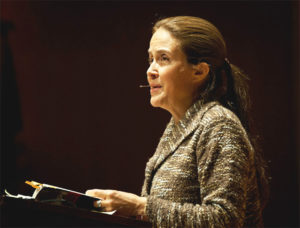 Though Nye makes her current home in San Antonio, Texas, she has frequently described herself as “the wandering poet.” And for good reason. The child of a Palestinian refugee father and a German-Swiss American mother, she spent her early years in San Antonio and Ferguson, Missouri, playing with African- and Mexican-American children. When her father’s mother became ill, he brought their family back in the West Bank, to a house on the tumultuous road that stretched between Jerusalem and Ramallah. It was at the age of six that she wrote her first poems, which focused on everyday subjects like friends and animals. Since then, her writing and speaking has carried her through Europe, Asia, and the Middle East.
Though Nye makes her current home in San Antonio, Texas, she has frequently described herself as “the wandering poet.” And for good reason. The child of a Palestinian refugee father and a German-Swiss American mother, she spent her early years in San Antonio and Ferguson, Missouri, playing with African- and Mexican-American children. When her father’s mother became ill, he brought their family back in the West Bank, to a house on the tumultuous road that stretched between Jerusalem and Ramallah. It was at the age of six that she wrote her first poems, which focused on everyday subjects like friends and animals. Since then, her writing and speaking has carried her through Europe, Asia, and the Middle East.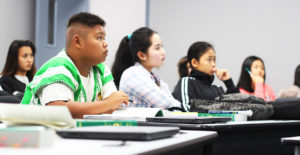 Dr. Mark Caruana, Dean of the Utica campus, came to his role from a previous position as senior pastor at the Tabernacle Baptist Church in downtown Utica. During his twenty years of ministry, he has focused on developing multiethnic ministries and helping his congregation welcome nearly nine hundred ethnic Karen immigrants who had escaped refugee camps in their native Burma. Caruana’s experience also earned him a place as a representative to the Burma Refugee Commission of the American Baptist Churches/USA and a spot on the board of directors of the Mohawk Valley Resource Center for Refugees, which provides a range of essential services and resources to recently arrived families.
Dr. Mark Caruana, Dean of the Utica campus, came to his role from a previous position as senior pastor at the Tabernacle Baptist Church in downtown Utica. During his twenty years of ministry, he has focused on developing multiethnic ministries and helping his congregation welcome nearly nine hundred ethnic Karen immigrants who had escaped refugee camps in their native Burma. Caruana’s experience also earned him a place as a representative to the Burma Refugee Commission of the American Baptist Churches/USA and a spot on the board of directors of the Mohawk Valley Resource Center for Refugees, which provides a range of essential services and resources to recently arrived families. 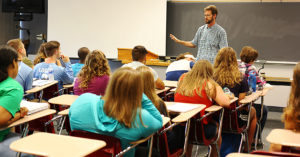 The course was primarily designed to “get students to think about some of the questions that are important to us,” said Dr. Linda Mills-Woolsey, professor of English and former academic dean. The course’s scope is chronological rather than topical or thematic, progressing from the earliest histories of the ancient world to the literary masterpieces of the 20th century. “All things being equal, this kind of thing has worked very well,” Mills-Woolsey said in reference to the program.Yale University, for instance, has for several years required its first-year students to participate in a uniquely integrative “Directed Studies” program, which was created to guide them through the study of literature, philosophy, history, and political theory. Similar programs have thrived at other private colleges in recent years.
The course was primarily designed to “get students to think about some of the questions that are important to us,” said Dr. Linda Mills-Woolsey, professor of English and former academic dean. The course’s scope is chronological rather than topical or thematic, progressing from the earliest histories of the ancient world to the literary masterpieces of the 20th century. “All things being equal, this kind of thing has worked very well,” Mills-Woolsey said in reference to the program.Yale University, for instance, has for several years required its first-year students to participate in a uniquely integrative “Directed Studies” program, which was created to guide them through the study of literature, philosophy, history, and political theory. Similar programs have thrived at other private colleges in recent years. 
 When addressing his international development classes, for example, he focuses heavily on the impact that climate change has on impoverished and underserved populations. While speaking to evangelical Christians, he tries to frame conversations within the language of creation care, environmental stewardship, and the Biblical mandate to care for the earth. This was the strategy and ethic that influenced him to invite Katharine Hayhoe, who spoke from a distinctively Christian perspective about climate change. It also played heavily into his decision to organize the upcoming Republicans and the Climate event, which hosts conservative Rep. Bob Inglis, a prominent advocate for market-based solutions to environmental concerns.
When addressing his international development classes, for example, he focuses heavily on the impact that climate change has on impoverished and underserved populations. While speaking to evangelical Christians, he tries to frame conversations within the language of creation care, environmental stewardship, and the Biblical mandate to care for the earth. This was the strategy and ethic that influenced him to invite Katharine Hayhoe, who spoke from a distinctively Christian perspective about climate change. It also played heavily into his decision to organize the upcoming Republicans and the Climate event, which hosts conservative Rep. Bob Inglis, a prominent advocate for market-based solutions to environmental concerns. 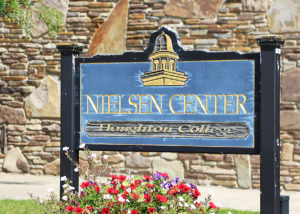 At Houghton College, where she moved with her husband Ken and became a full-time professor of Physical Education and Recreation in 1961, Doris immediately saw the potential for robust, thriving wilderness adventure programs. The inviting Allegheny County landscape—with its pastoral farmlands, rolling hills, and untamed forests—seemed like the perfect place to establish such student activities.
At Houghton College, where she moved with her husband Ken and became a full-time professor of Physical Education and Recreation in 1961, Doris immediately saw the potential for robust, thriving wilderness adventure programs. The inviting Allegheny County landscape—with its pastoral farmlands, rolling hills, and untamed forests—seemed like the perfect place to establish such student activities.